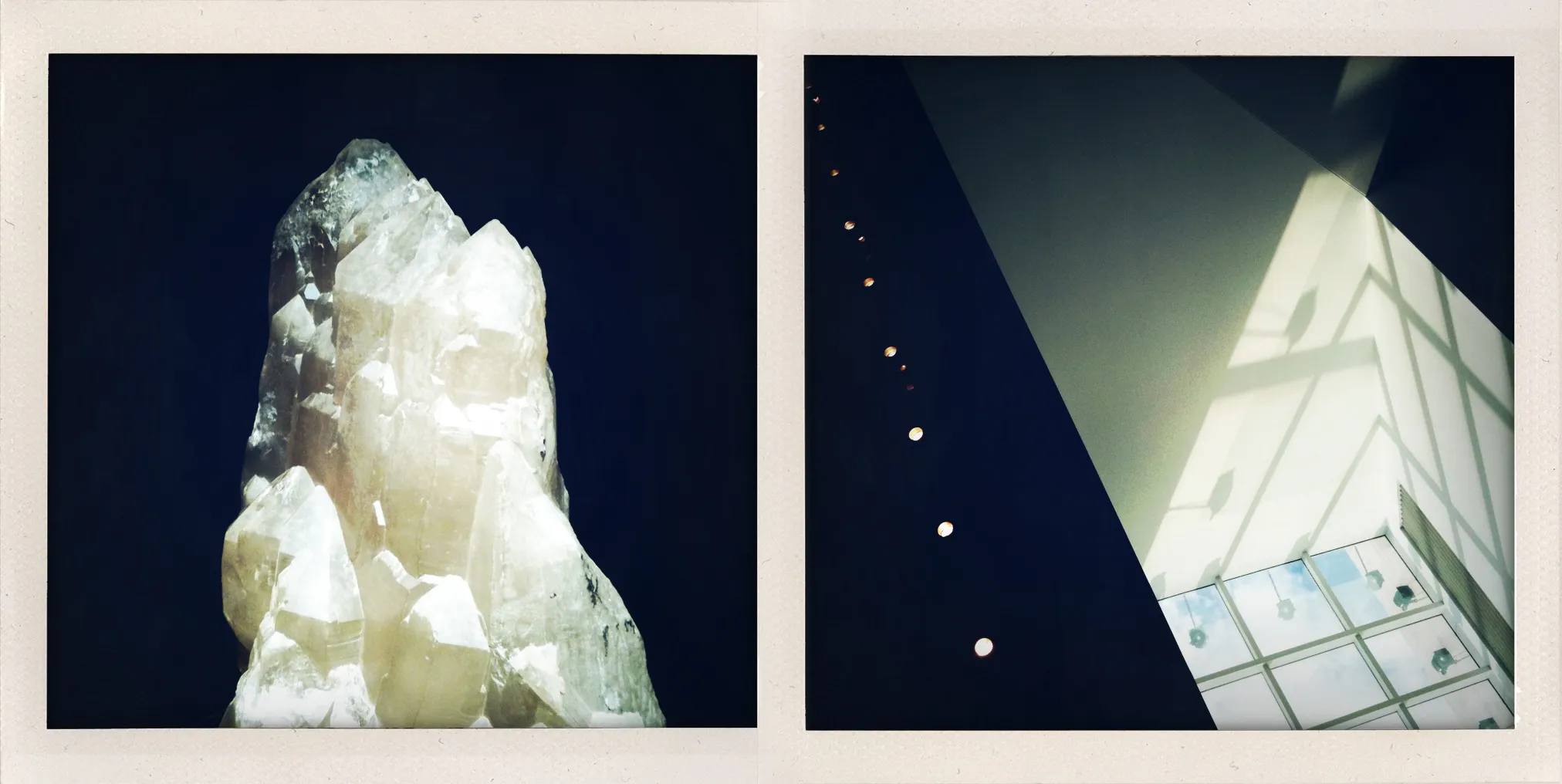Dip|Tychs Storytelling and Altered Contexts Through Juxtaposition
Crystal|Light

This diptych pairs a mineral crystal specimen with sun-cast architectural shadows. Both images explore how light interacts with geometry—the left through material refraction, the right through immaterial projection. The crystal’s jagged facets find their echo in the hard-edged window shadows and gridded ceiling lights.
Natural geological formation meets human-made structure, yet both organize space through similar angular principles. The work examines light as both revealer of substance and creator of form, shifting between the tangible and the projected. The title references the dual nature of illumination: crystals that catch and fracture light, and light itself crystallizing into geometric patterns.
Essay written: November 2025